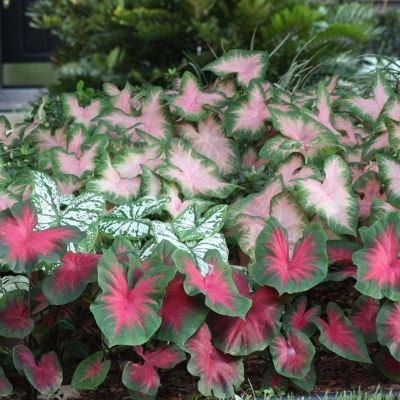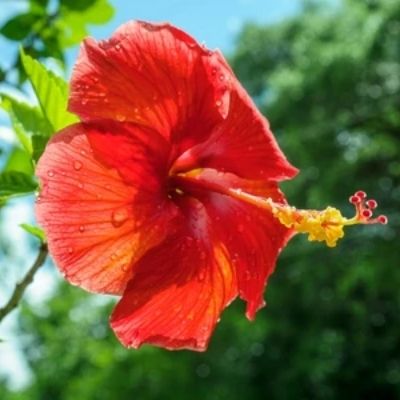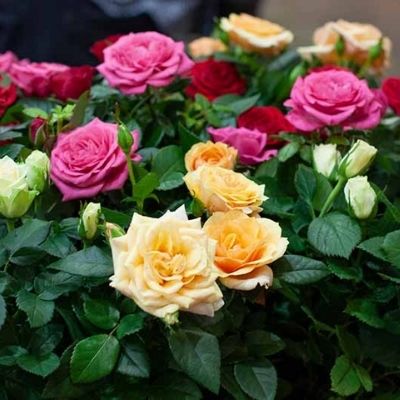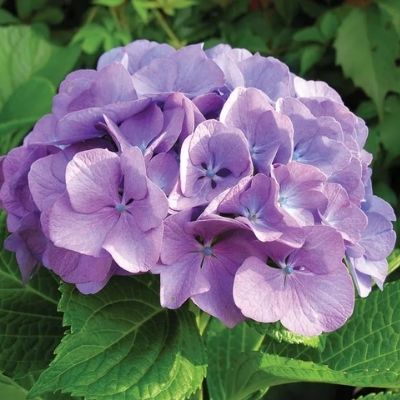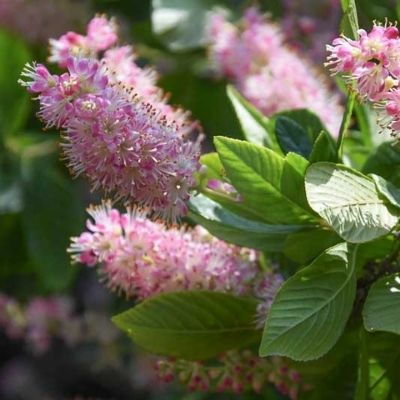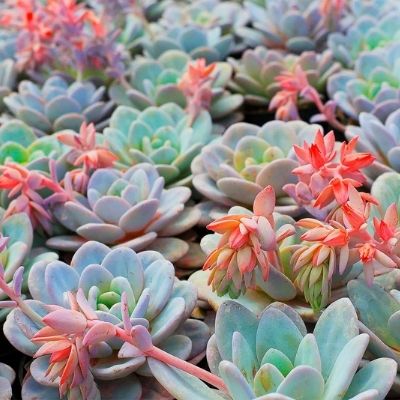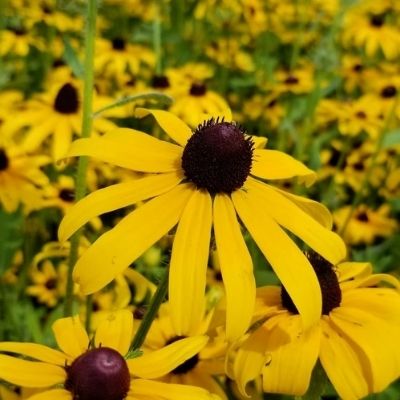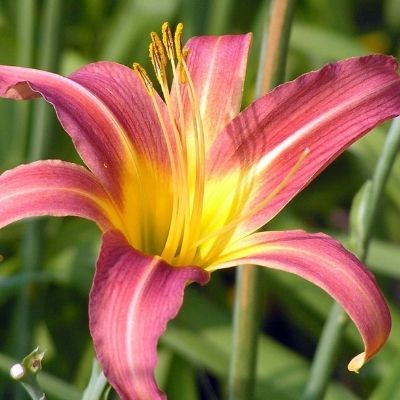Table of Contents
9 Best Plants For Your Home Garden
We all know that plants can add life and beauty to your home and your garden. They help purify the air and enhance the ambiance inside of your home or outside in your garden too. But, what plants should you choose?
The best plants for your garden depend on the climate and the overall size of your garden. It is important to consider important factors like the amount of sunlight or shade the plants get along with the health of the soil. This will determine what the best plant for your home garden is.
1. Caladium
Picture of Caladiums
Caladiums are easy to grow plants for your garden that come in many sizes and colors. They are also known for their bright colors and uniquely shaped leaves.
Caladiums don't need much care or attention which makes them perfect for beginner gardeners. They only require a few inches of digging to plant and they tend to flower to a full bloom relatively quickly.
Caladiums are an attractive, easy-to-grow plant that will make a great addition to any garden. As they grow and bloom, the caladium will provide your home with brilliant color and a beautiful appearance.
This plant is known to be a shade dweller and should be placed in a location that does not get too much exposure to sunlight. The big dark green leaves will store lots of energy so they are best suited in the shade for optimal growth.
2. Hibiscus
Picture of Hibiscus
The Hibiscus plant is a perennial plant that can be found in gardens and landscapes. It is a shrub with many different varieties and colors which makes it the perfect plant for the home garden.
This plant has many uses for the home garden such as color and texture in your landscape, beautiful flowers that you can cut and use for arrangements every few weeks during the summer, beautiful foliage that covers your entire yard, good bug repellent to keep away unwanted pests.
It also is known to have large leaves that can grow up to 12 inches wide to absorb sunlight for energy and full bloom. They will reach their peak in the spring and they should also be cared for regularly.
This plant will require a bit more maintenance but the beauty it will provide for your garden will make the extra work worth it.
3. Roses
Picture of Roses
Roses are beautiful flowers that can be grown indoors or outdoors. They require a lot of sunlight, good soil, and some extra care.
They are also one of the best plants for your home garden. They come in different varieties with different colors and shapes, which makes them perfect your home garden. You should remember that rose bushes have sharp thorns too.
They are not only beautiful but also require less care. Many roses are suitable for all climates and zones. This is not exclusive to a single season, but if you need flowers in the spring, summer, or autumn, this is an attractive plant to consider.
You should consider roses. They are one of the best plants for your home garden because they're beautiful and can easily fit into any space in your yard. They're also very hardy and easy-to-care-for.
4. Hydrangea
The hydrangea is one of the most popular plants for home gardens. Its popularity has increased over the years due to its ability to grow in a variety of places, and it comes in a variety of colors and sizes.
This is because they are not only attractive and provide aesthetic value, but also because they provide both ornamental and edible purposes. It can be found in many colors and sizes and also provides a lot of color throughout the seasons.
The variety available will also change the amount of maintenance required for your plant. The best time to plant a Hydrangea is in the fall, but early spring is still a good time to get results and a fast bloom too.
It is best to use mulch with these plants too because of the size and way they grow. It helps them remain more stable and to protect from pests that are mostly attracted to this bright and beautiful plant.
5. Daphne
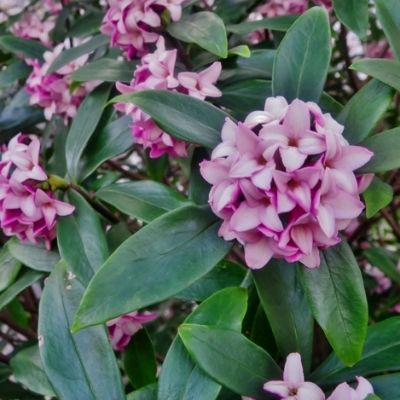
Picture of Daphnes
The Daphne is a beautiful, fragrant plant that can be found in many different colors. Daphnes are shrubs with glossy leaves and delicate white or pink flowers. They are most known for their pleasant scent.
Most people seem to think of Daphnes as tropical plants, but they are native to the Mediterranean region. But they can be found all over with large green leaves and smaller light-colored flower bulbs at the center.
Daphnes have been used for many different purposes over time including ornamentals, food crops, fuel sources, and even medicinal purposes. The leaves of certain species of Daphne contain a chemical called anethole which gives them their distinctive smell.
6. Clethra
Picture of Clethras
Clethra is a great plant that can bring life to your home garden. It brings in color and vibrancy and it looks beautiful in the summertime. It also attracts butterflies.
Many flowers will thrive in your garden. One of the most popular flowers is the Clethra, which has small white blooms in clusters. It can be used as a ground cover, in bouquets, and even as a houseplant.
Clethra’s pattern of light green leaves with creamy white spots makes it an attractive addition to any garden. However, its fragrant flowers grow up to one foot tall and can produce up to three hundred blooms per plant.
This is a top choice for summer plants because it has a bloom that is light yet elegant. The flowers remain compact and grow up to 6 inches, making them a great choice in the corners of your garden.
7. Succulents
Picture of Succulents
Succulents are diverse and easy to grow plants. They come in a variety of colors and shapes. They make for a great addition to your garden and also can be used as houseplants.
We highly recommend them as an addition to your garden because they have many benefits. They are most popularly placed in rock gardens too, but they can fit just about anywhere in your yard.
Succulents can survive in dry or wet conditions because their leaves have thick cuticle layers that lie one on top of another, keeping moisture inside the leaf. They are some of the most diverse of all plants.
They can be grown as perennial plants and they don't require much water and nutrients, making them great to amass in a small space. Succulent plants are also inexpensive and easy to maintain.
8. Black-Eyed Susan
Picture of Black-Eyed Susans
Black-Eyed Susan plants are a type of flowering plant that has bright yellow flowers. The plant is native to North America and is usually planted in gardens or on balconies.
Black-Eyed Susan plants are easy to grow with the right care. They need good drainage so they don't drown when it rains or when they get watered too much, but overall they can grow quickly in a variety of places.
They have a long bloom period and they grow up to 9 inches long, but they can be a good addition to a garden to add a bright look along with other flowers. They grow in a compact area and there are 25 different species.
9. Daylily
Picture of Dayllies
The Daylily plant is one of the many plants that can be used in your home garden. It has a lot of potential to provide beauty and health benefits. This is one of the fastest and easiest perennials to grow.
Daylilies are a type of flowering bulb that can be planted and grown indoors and outdoors. They bloom from late winter to early summer, providing cheer and color to any room or outdoor space.
It blooms continuously year-round, providing bright orange flowers for four months straight before fading to green leaves with white stripes near the base of each stem.
This plant is great for small spaces such as window boxes or apartment balconies, but it also makes a good choice in the garden.
Factors To Consider In Plants For a Home Garden
With the increasing popularity of home gardens, it is important to consider factors that will help ensure that they can thrive. Here are some important factors to consider before you purchase plants for your garden to help you find the perfect match for your home.
Amount of Shade
Choose a location where the plants will receive enough sunlight and be in a medium or large container with good drainage, but you should avoid planting them in the frost line. If they are in pots, make sure they have drainage holes.
Certain plants thrive in the shade while others need more sunlight to grow better. You should know which plants do best in each environment so you can choose the right ones for your home garden.
Plant Size
Plant size matters when it comes to how much water they require. Bigger plants need more water than smaller ones, so it is best to choose larger ones if you want your garden to look natural. For larger plants with lush green leaves, make sure that they get plenty of light to help with growth.
You should take into consideration the size of your garden too because the way a plant will grow is a major factor. It is important to leave enough room for each plant to grow fully within your garden.
Flowering Time
The plant growth cycle is the critical factor in gardening for both weed and flower plants. It is because plants need a lot of time to grow and produce flowers.
In the case of flower plants, there is a specific flowering time that needs to be met for them to bloom. With this in mind, you can determine if a plant will fit well in your home garden based on how long it will take to reach full bloom.
Maintenance Required
Having plants in your garden provides you with a more natural feel of the outdoors. There are so many different plants to choose from so it can be difficult to decide which plants are best for your home.
The maintenance required for a plant is an important factor when finding the best plants for your home garden. This is because some plants require more maintenance than others, while some require very little maintenance.
4 Must-Read Tips For Growing Plants In Your Home Garden
As you start to put new plants in your home garden, you will run into some challenges that could hinder their growth and determine how well your garden will bloom. Luckily, there are some key tips you can take into consideration when growing plants in your home garden.
1. Don’t Be Afraid to Use Mulch
If you are gardening, then you know how important mulch is to your plants. It's one of the best ways to keep your plants healthy and happy. It will also help them to grow bigger and faster in a better environment.
You can use two to three inches of mulch around each of your plants to help reduce the growth of weeds and the accumulation of moisture in the wrong areas. It also helps to isolate sunlight on a plant better to promote better growth.
2. Water Lightly
One of the key tips to remember is to water your plants lightly. Doing it incorrectly is one of the most common mistakes that gardeners make.
The common mistake is to water them too much, which causes them to grow poorly. The best way to water your plants is to water them lightly so that they can obtain the right amount of moisture they need.
It's important to remember that you should not drown your plants in water, because this will cause them to rot. The plant will also grow poorly and may not be able to handle the excess water.
3. Be Precise With Location
You should be very precise with the location of your plants in your garden. There are lots of factors you need to consider like sunlight and surrounding plants, so location is extremely important to the success of the plants in your garden.
Plants need water, air, sunlight, and fertile soil to grow healthy. However, not all grounds have a proper amount of these things. You can remedy the situation by planting a variety of plants in your garden for healthy growth.
4. Prioritize Creating Healthier Soil
A key component of a garden is the soil. If you want to have healthy plants, you must give your garden the right nutrients for plant growth.
You can create healthier soil at your home by testing it, using mulch, and adding organic matter to help compact your soil more. All of these techniques can help when growing plants in your garden.
How To Prepare Your Home Garden For Plants
A home garden is beneficial for many reasons. The plants add beauty and greenery to the place and help reduce pollution from chemical fertilizers and pesticides. They also make use of natural resources, such as rainwater for irrigation, which saves you money on water bills.
To build an amazing garden outside of your home, you will need to follow a few key steps to properly prepare everything. You can follow these steps to get started.
1. Clear Out Weeds & Debris
A clean garden is a healthy garden, so it’s important to start by removing the weeds and debris. This means removing any plants that have grown too large or are no longer harvestable, as well as removing any plants that have died.
There is no point in planting a flower or a vegetable in an area that has been neglected. Take the time to pull out any weeds and clean your soil before you move on to the next steps and think about planting anything.
2. Prepare Your Soil
Your soil must be nutrient-rich before you plant. Adding organic matter or chemical fertilizers are good ways to improve the quality of your soil. This works well to prepare the soil for plants in the next step.
The exact formula you use depends on what type of plants you are growing and how often you plan on planting them. You should first decide on the type of plant before using any types of organic matter or chemicals on your soil.
3. Set Up Your Plants
Now that your soil is ready you can set up your plants to get planted in the garden. It is critical to have enough space open for each plant so they are not too crowded when they grow and there is plenty of room for each.
You need to dig a hole for your plants. The depth of the pot does not matter because you will be planting them all at once. You should plant four or five plants in each pot so that they have enough space to grow.
4. Add Mulch
Once you have your plants in the ground, we prefer to add mulch around each plant to help with the growth process. It will protect the areas from developing weeds or too much moisture during the flowering time.
It will help plants reach a full bloom easier too because it creates a direct path of sunlight for the plant. Mulch is not necessary, but it is a great way to improve the health of your soil too.
5. Water
Finally, you can water your plants after they get planted. The first time you water them should be very light so that they don't die before their leaves grow out and develop roots for themselves so that they can survive.
Recent Articles



